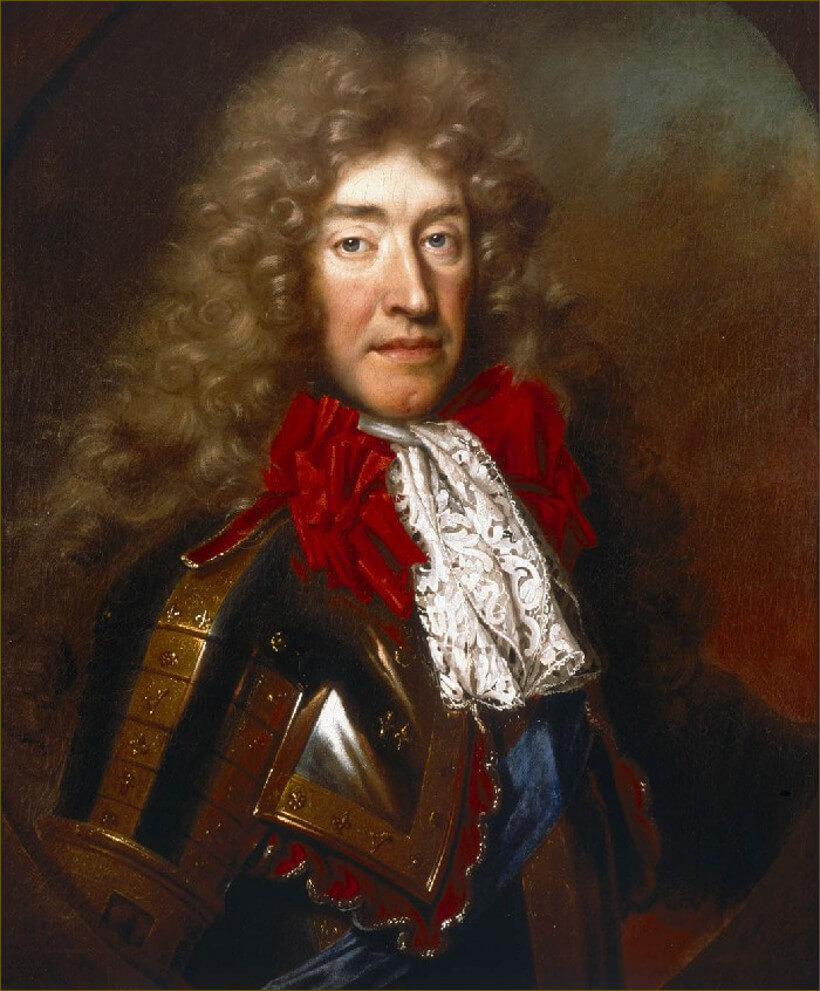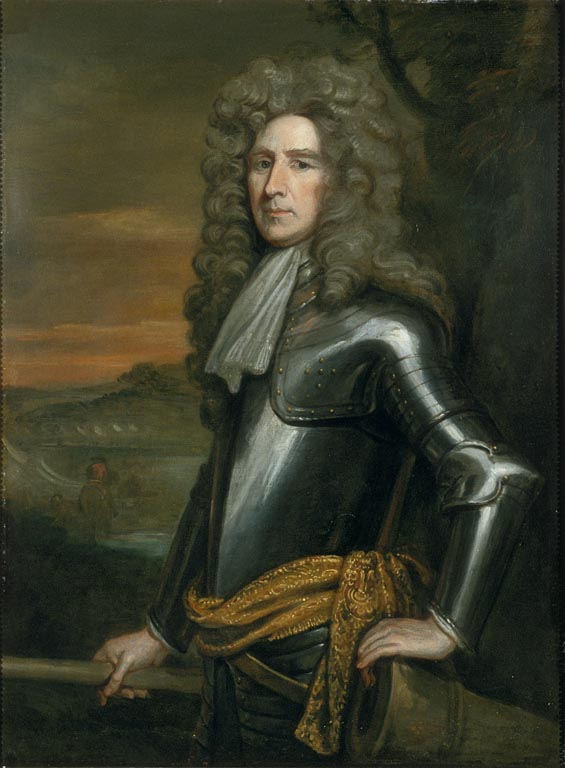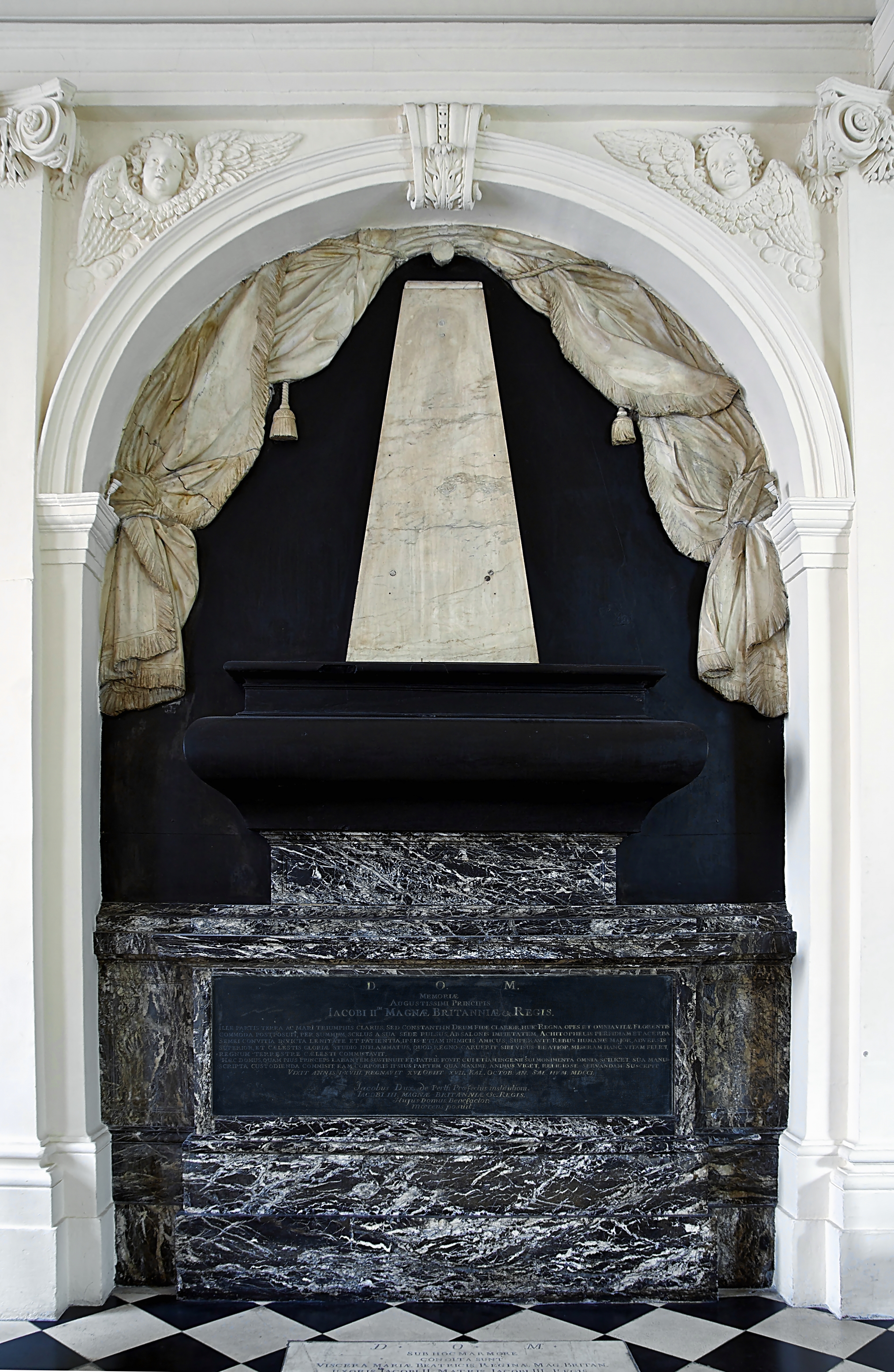|
Glorious Revolution In Scotland
The Glorious Revolution in Scotland refers to the Scottish element of the 1688 Glorious Revolution, in which James VII was replaced by his daughter Mary II and her husband William II as joint monarchs of Scotland and England. Prior to 1707, the two kingdoms shared a common monarch but were separate legal entities, so decisions in one did not bind the other. In both countries, the Revolution confirmed the primacy of Parliament over the Crown, while the Church of Scotland was re-established as a Presbyterian rather than Episcopalian polity. Although James became king in February 1685 with widespread support in both countries, tolerance for his personal Catholicism did not apply to the religion in general. When the Parliaments of England and Scotland refused to rescind legal restrictions on Catholics, James suspended them and ruled by decree. The birth of a Catholic heir in June 1688 caused widespread civil disorder in Scotland and England and a coalition of English politician ... [...More Info...] [...Related Items...] OR: [Wikipedia] [Google] [Baidu] |
Convention Of Estates (1689)
The 1689 Convention of Estates sat between 16 March 1689 and 5 June 1689 to determine the settlement of the Scottish throne, following the deposition of James VII in the 1688 Glorious Revolution. The Convention of the Estates of Scotland was a sister-institution to Parliament, comprising the three estates of bishops, barons and representatives of the Burghs. Historically, it had been summoned by the king of Scots for the limited purpose of raising taxes, and could not pass other legislation. Unlike the English Convention Parliament of 1689, the 1689 Scottish Convention was also a contest for control of the Church of Scotland or Kirk. While Scotland played no part in the landing in England and there was little enthusiasm for William and Mary, by November 1688 only a tiny minority actively supported James. Many of William's exile advisors were Scots, including Melville, Argyll, his personal chaplain, William Carstares, and Gilbert Burnet, his chief propagandist. News of James ... [...More Info...] [...Related Items...] OR: [Wikipedia] [Google] [Baidu] |
James II 1633-1701
James is a common English language surname and given name: *James (name), the typically masculine first name James * James (surname), various people with the last name James James or James City may also refer to: People * King James (other), various kings named James * Saint James (other) * James (musician) * James, brother of Jesus Places Canada * James Bay, a large body of water * James, Ontario United Kingdom * James College, a college of the University of York United States * James, Georgia, an unincorporated community * James, Iowa, an unincorporated community * James City, North Carolina * James City County, Virginia ** James City (Virginia Company) ** James City Shire * James City, Pennsylvania * St. James City, Florida Arts, entertainment, and media * ''James'' (2005 film), a Bollywood film * ''James'' (2008 film), an Irish short film * ''James'' (2022 film), an Indian Kannada-language film * James the Red Engine, a character in ''Thomas the Tank En ... [...More Info...] [...Related Items...] OR: [Wikipedia] [Google] [Baidu] |
Invitation To William
The ''Invitation to William'' was a letter sent by seven notable English nobles, later called "the Immortal Seven", to stadtholder William III, Prince of Orange, received by him on 30 June 1688 (Julian calendar, 10 July Gregorian calendar). In England, the heir apparent to the throne, James Francis Edward Stuart, had just been born to the unpopular King James II of England, and baptised a Catholic. The letter asked William, who was a nephew and son-in-law of James II, to use military intervention to force the king to make his eldest daughter, Mary, William's Protestant wife, his heir. The letter alleged that the newborn prince was an impostor. The letter informed William that if he were to land in England with a small army, the signatories and their allies would rise up and support him. The ''Invitation'' briefly rehashed the grievances against King James. It claimed that the king's son was supposititious (fraudulently substituted) and that the English people generally belie ... [...More Info...] [...Related Items...] OR: [Wikipedia] [Google] [Baidu] |
Brexit
Brexit (; a portmanteau of "British exit") was the withdrawal of the United Kingdom (UK) from the European Union (EU) at 23:00 GMT on 31 January 2020 (00:00 1 February 2020 CET).The UK also left the European Atomic Energy Community (EAEC or Euratom). The UK is the only sovereign country to have left the EU or the EC. Greenland left the EC (but became an OTC) on 1 February 1985. The UK had been a member state of the EU or its predecessor the European Communities (EC), sometimes of both at the same time, since 1 January 1973. Following Brexit, EU law and the Court of Justice of the European Union no longer have primacy over British laws, except in select areas in relation to Northern Ireland. The European Union (Withdrawal) Act 2018 retains relevant EU law as domestic law, which the UK can now amend or repeal. Under the terms of the Brexit withdrawal agreement, Northern Ireland continues to participate in the European Single Market in relation to goods, and to be a member ... [...More Info...] [...Related Items...] OR: [Wikipedia] [Google] [Baidu] |
Claim Of Right Act 1689
The Claim of Right (c. 28) is an Act passed by the Convention of the Estates, a sister body to the Parliament of Scotland (or Three Estates), in April 1689. It is one of the key documents of United Kingdom constitutional law and Scottish constitutional law. Background In the Glorious Revolution, William of Orange landed with his army in England on 5 November 1688. King James VII of Scotland, who was also King of England and Ireland as James II, attempted to resist the invasion. He then sent representatives to negotiate, and he finally fled England on 23 December 1688. Whilst the Convention Parliament in England declared that James, as King of England, had abdicated the Government, and issued an English Bill of Rights on 13 February 1689 offering the Crown of England to William and Mary, the Scots found themselves facing a more difficult constitutional problem. As James had not been present in Scotland during the crisis and had not fled from Scottish territory in Decembe ... [...More Info...] [...Related Items...] OR: [Wikipedia] [Google] [Baidu] |
Jacobitism
, war = , image = Prince James Francis Edward Stuart by Louis Gabriel Blanchet.jpg , image_size = 150px , caption = James Francis Edward Stuart, Jacobite claimant between 1701 and 1766 , active = 1688–1780s , ideology = * Legitimist support for the senior line of the Stuarts * Indefeasible dynastic right * Divine right of kings * Irish nationalism * Scottish nationalism , leaders = , leader1_title = Military leaders , leader1_name = , headquarters = , area = British Isles , size = , allies = *Papal States (Until 1788) , opponents = Jacobitism (; gd, Seumasachas, ; ga, Seacaibíteachas, ) was a political movement that supported the restoration of the senior line of the House of Stuart to the British throne. The name derives from the first name of James II and VII, which in Latin translates as ''Jacobus''. When James went into exile ... [...More Info...] [...Related Items...] OR: [Wikipedia] [Google] [Baidu] |
Jacobite Rising Of 1689
The Jacobite rising of 1689 was a conflict fought primarily in the Scottish Highlands, whose objective was to put James II & VII back on the throne, following his deposition by the November 1688 Glorious Revolution. Named after "Jacobus", the Latin for James, his supporters were known as 'Jacobites' and the associated political movement as Jacobitism. The 1689 rising was the first of a series of rebellions and plots seeking to restore the House of Stuart that continued into the late 18th century. Part of the wider European conflict known as the Nine Years War, the Scottish revolt was intended to support the 1689 to 1691 Williamite War in Ireland. Despite a decisive Jacobite victory at Killiecrankie in July 1689, their charismatic leader John Graham, 1st Viscount Dundee was killed in the final attack. His death, combined with limited internal or external support, meant the rising never presented a real threat to the new administration of William and Mary II. Major military acti ... [...More Info...] [...Related Items...] OR: [Wikipedia] [Google] [Baidu] |
Coregency
A coregency is the situation where a monarchical position (such as prince, princess, king, queen, emperor or empress), normally held by only a single person, is held by two or more. It is to be distinguished from diarchies or duumvirates such as ancient Sparta and Rome. Co-principality is a distinct but related system employed in contemporary Andorra, where monarchical power is formally divided between two rulers. Historical examples Coregencies were common in the Hellenistic period; according to one scholar, they "can usually be explained as a means of avoiding crises of succession or internal conflict, and of strengthening dynastic identity and ideology." Other examples include the coregency of Frederick I of Austria and Louis the Bavarian over the Kingdom of Germany. ''Jure uxoris'' Kings in Kingdoms such as Spain and Portugal can also be found (Ferdinand V and Isabella I of Castile, Philip I and Joanna of Castile, Peter III and Maria I of Portugal, etc.). In Navarre, ... [...More Info...] [...Related Items...] OR: [Wikipedia] [Google] [Baidu] |
Convention Of The Estates Of Scotland
The Convention of Estates of Scotland was a sister institution to the Scottish Parliament which sat from the early sixteenth century. Initially it was only attended by the clergy and nobles, but the burgh commissioners were later added. The Convention of Estates differed from Parliament in that it could be summoned by the King for the limited purpose of raising taxation, but could not pass other legislation. Like its predecessor General Council it played an important role in political and legislative affairs in Scotland in the sixteenth and seventeenth centuries. During the Glorious Revolution in Scotland, the Scottish Privy Council summoned the Convention of Estates of 1689 to determine the throne of Scotland. It offered it to William and Mary, adopting the Articles of Grievances and Claim of Right Act 1689, and transformed itself into a full parliament. See also * List of parliaments of Scotland (includes Conventions of Estates) * Commissioner (Scottish Parliament) ... [...More Info...] [...Related Items...] OR: [Wikipedia] [Google] [Baidu] |
Scottish Privy Council
The Privy Council of Scotland ( — 1 May 1708) was a body that advised the Scottish monarch. In the range of its functions the council was often more important than the Estates in the running the country. Its registers include a wide range of material on the political, administrative, economic and social affairs of the Kingdom of Scotland. The council supervised the administration of the law, regulated trade and shipping, took emergency measures against the plague, granted licences to travel, administered oaths of allegiance, banished beggars and gypsies, dealt with witches, recusants, Covenanters and Jacobites and tackled the problem of lawlessness in the Highlands and the Borders. History Like the Parliament, the council was a development of the King's Council. The King's Council, or ''curia regis'', was the court of the monarch surrounded by his royal officers and others upon whom he relied for advice. It is known to have existed in the thirteenth century, if not earlie ... [...More Info...] [...Related Items...] OR: [Wikipedia] [Google] [Baidu] |
John Drummond, 1st Earl Of Melfort
John Drummond, 1st Earl of Melfort, styled Duke of Melfort in the Jacobite peerage (8 August 1650 - 25 January 1715), was a Scottish politician and close advisor to James II. A Catholic convert, Melfort and his brother the Earl of Perth consistently urged James not to compromise with his opponents, contributing to his increasing isolation and ultimate deposition in the 1688 Glorious Revolution. In exile, Melfort became the first Jacobite Secretary of State but his unpopularity with other Jacobites led to his resignation in 1694. He served as James' Papal Ambassador in Rome but failed to regain his former influence and retired from active politics. He died in Paris on 25 January 1715. Life John Drummond, later Earl of Melfort, was born in 1649, probably at Stobhall in Perthshire since the family home Drummond Castle was then occupied by the New Model Army. The second son of James Drummond, 3rd Earl of Perth (ca 1615-1675) and Lady Anne Gordon (ca 1621-1656), his elder b ... [...More Info...] [...Related Items...] OR: [Wikipedia] [Google] [Baidu] |
James Drummond, 4th Earl Of Perth
James Drummond, 1st Duke of Perth KT PC (164811 May 1716), also 4th Earl of Perth and 7th Lord Drummond, was a Scottish statesman, and Jacobite. Family The eldest son of James Drummond, 3rd Earl of Perth by his spouse Lady Anne, daughter of George Gordon, 2nd Marquess of Huntly, he was educated at the University of St Andrews, and succeeded his father on 2 June 1675, and was served heir to him on 1 October. Political career In 1678 he was appointed a member of the Scottish Privy Council and supported Lord Lauderdale's policy of giving up the disaffected western shires of Scotland to highland raids, before joining Hamilton's faction in opposition to Lauderdale. After Lauderdale's retirement in 1680 he was one of the Committee of Seven which managed Scottish affairs. He was appointed Lord Justice General in 1682 and an Extraordinary Lord of Session on 16 November the same year. He introduced the use of the thumbscrew in Scotland. He was also Lord Chancellor of Scotland, ... [...More Info...] [...Related Items...] OR: [Wikipedia] [Google] [Baidu] |



.jpg)

